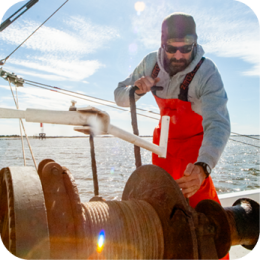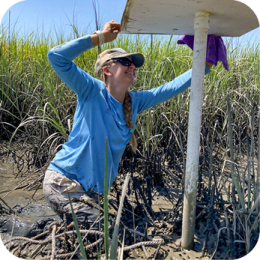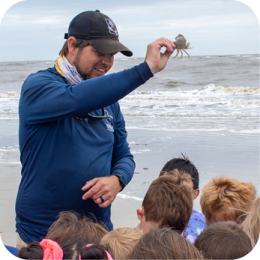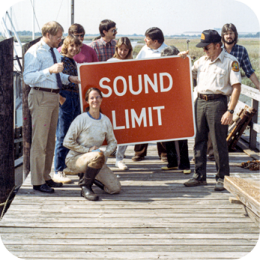The Georgia Department of Natural Resources (DNR) has been struggling with mapping abandoned and derelict vessels for several years. Based upon recent estimates, there are as many as 180 sunken vessels along the coast of Georgia that are potential hazards for boaters. On the state's tidal water bottoms, 130 abandoned or derelict vessels have been identified as non-historic wrecks (vessels that have no significant historical value). These vessels include shrimp boats, abandoned recreational vessels, barges, and cranes. Recently, DNR's Coastal Resources Division began the task of locating, documenting, and cataloging these non-historic wrecks with GIS.
The Division is also leading the public information effort in Georgia to make citizens aware of these vessels' locations via an ArcIMS application-based Web site. The GIS interface on the site will serve as a conduit between survey data from the field and stakeholders interested in the survey results. The Web site will be regularly updated to keep the boating public informed of these coastal hazards in order to minimize the risk of collision and injury. [Editor's note: With the release of ArcGIS 9.2, ArcIMS functionality is now available with ArcGIS Server].
Mobile Mapping
In preparation for on-site mapping, the DNR team loaded ArcPad into a GeoXH 2005 Series Pocket PC and customized ArcPad with a pull down menu containing the various information cells that would need to be collected in the field. The mobile GIS unit was carried into the field and placed on the deck of the small research vessel or was hand-carried into the marsh and/or tributary to accurately mark the location of the sunken or derelict vessel. Information was entered through the drop down menus on the Pocket PC. Because of the large size of the TIFF files, staff members uploaded only those sections of coastal county maps necessary to conduct the survey of the project waterway. After collecting the data, staff members would download the updated point shape files into ArcGIS Desktop software at the office. A 2-gigabyte secure digital (SD) card was added to the Pocket PC to enable the use of additional TIFF files. Photographs or side scan sonar images were made of various wrecks to be used on the Web site to allow boaters to see the water hazard as it exists. Because some of the derelict vessels have sunk in deep water and are not exposed, side scan images are being used to enhance wreck site awareness.
These digital photos will be accessible via a link on the finished ArcIMS application based Web site. Additional information, such as impact to marsh vegetation from the vessel itself or from fuel and oil leaks will be collected. This information will be analyzed using ArcGIS Desktop software and available on the site to staff making decisions regarding the removal of these derelict non-historic wrecks. The site also will include a description of the marine debris, the location, and condition. The handheld Trimble GeoXH Pocket PC allowed staff to quickly collect the GPS coordinates, log the information, and move to the next subject location. The Coastal Resources Division plans to continue to use the mobile GIS and georeferenced photographs technologies in its fieldwork. This handheld technology significantly reduced the in-the-field mapping time and has created much more accurate information than could have been achieved with manual field mapping methods or simply utilizing georeferenced aerial photographs alone.
Through the use of newspaper articles, departmental publications, and personal contacts the State of Georgia has also recruited local boaters and charter fishermen to help identify additional wrecks or derelict vessels.
When the project is completed the general public will be able to access the sunken vessel data through the Georgia Department of Natural Resources Web site. Please note that on the aforementioned test page, some of the features have not been activated. The site is a basic example of what can be expected once the project is completed. The site will be updated regularly to add or remove derelict and sunken vessels. The project will assist staff, local governments, and possibly Federal agencies in assessing marine debris as it relates to navigation, fishing, and environmental impacts.
For more information, contact Charles "Buck" Bennett, Compliance and Enforcement Manager, Coastal Resources Division of the Georgia Department of Natural Resources, at (912) 264-7218 or via e-mail at buck.bennett@dnr.ga.gov







